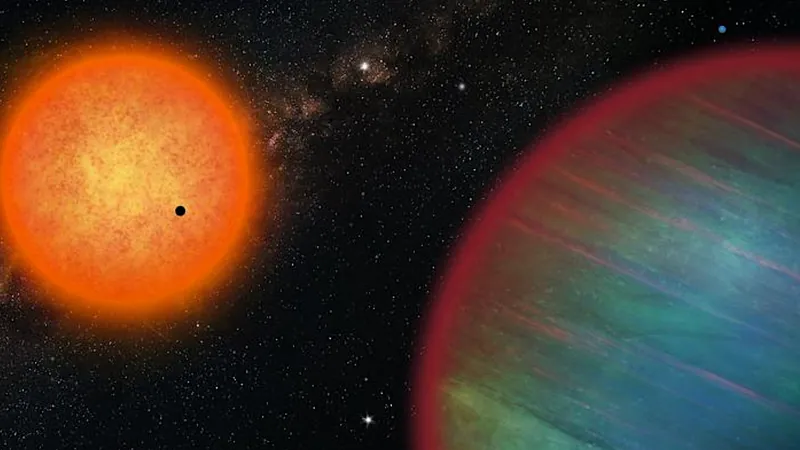
Groundbreaking Discovery of Two Exoplanets Challenges Our Understanding of Planet Formation!
2025-01-20
Author: Siti
Groundbreaking Discovery of Two Exoplanets
A groundbreaking discovery by a team of astronomers from The University of Warwick and the University of Geneva (UNIGE) has unveiled the existence of two new exoplanets in the WASP-132 system, challenging long-accepted theories regarding the formation of planetary systems.
Unconventional Features of the New Exoplanets
The newly identified planets include an inner super-Earth and an outer icy giant, which defy traditional models of how "hot Jupiter" systems – gas giants close to their stars – form and evolve. Previously, it was believed that hot Jupiters formed far from their stars due to a lack of gas and dust, eventually migrating inward. This migration was thought to displace any nearby planets, resulting in hot Jupiters being solitary in their orbits.
Challenging Migration Theories
However, the discovery of these two exoplanets orbiting alongside the hot Jupiter in the WASP-132 system raises critical questions about this migration theory. David Armstrong, an Associate Professor of Physics at The University of Warwick, expressed his excitement: "Finding the inner super-Earth is exceptional; it’s particularly rare to discover planets close to hot Jupiters. Our comprehensive observations characterized its mass, density, and composition, revealing a planet that is remarkably similar in density to Earth."
Implications for Planetary System Dynamics
This revelation adds complexity to the dynamics of the WASP-132 planetary system. The previously accepted notion that hot Jupiters destabilize their surroundings as they move inward is now tested; instead, a more stable migration route through a proto-planetary disc may be at play.
A Unique Laboratory for Study
François Bouchy, an Associate Professor in the Department of Astronomy at UNIGE, noted that "the WASP-132 system serves as a unique laboratory for investigating the formation and evolution of multi-planetary systems. This discovery, featuring the coexistence of a hot Jupiter, an inner super-Earth, and an outer icy giant, is unprecedented."
Characteristics of the Planets
The hot Jupiter completes an orbit around its star in a mere seven days and three hours, while the super-Earth, with a mass six times that of Earth, orbits in just over 24 hours. In contrast, the icy giant, over five times more massive than Jupiter, takes approximately five years to complete its orbit. Detailed observations have also provided insights into their internal compositions, revealing that the super-Earth is primarily composed of metals and silicates.
Ongoing Research and Future Insights
The ESA’s Gaia satellite has been tracking minute variations in star positions since 2014, further enhancing the search for planetary companions and brown dwarfs in various systems, including WASP-132. This ongoing research underscores the dynamic nature of our universe and the possibility that our understanding of planetary formation and evolution may be on the cusp of significant revisions.
Conclusion and Future Discoveries
As the astronomical community eagerly anticipates further observations and analyses, one question looms large: what other surprises might the cosmos hold for us? Stay tuned for more revelations in the realm of exoplanetary science!




 Brasil (PT)
Brasil (PT)
 Canada (EN)
Canada (EN)
 Chile (ES)
Chile (ES)
 Česko (CS)
Česko (CS)
 대한민국 (KO)
대한민국 (KO)
 España (ES)
España (ES)
 France (FR)
France (FR)
 Hong Kong (EN)
Hong Kong (EN)
 Italia (IT)
Italia (IT)
 日本 (JA)
日本 (JA)
 Magyarország (HU)
Magyarország (HU)
 Norge (NO)
Norge (NO)
 Polska (PL)
Polska (PL)
 Schweiz (DE)
Schweiz (DE)
 Singapore (EN)
Singapore (EN)
 Sverige (SV)
Sverige (SV)
 Suomi (FI)
Suomi (FI)
 Türkiye (TR)
Türkiye (TR)
 الإمارات العربية المتحدة (AR)
الإمارات العربية المتحدة (AR)